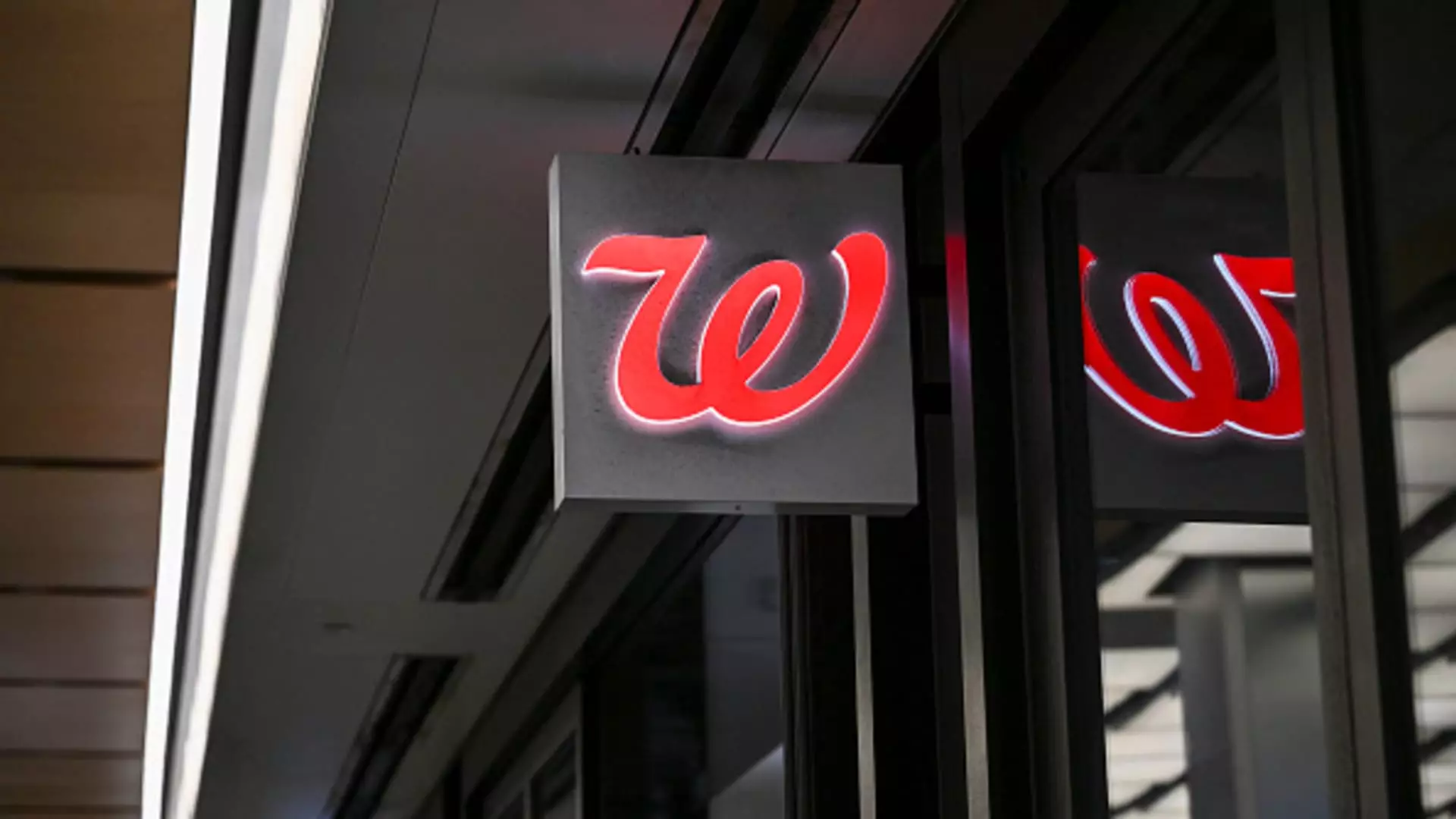Walgreens has reported its fiscal second-quarter results that exceeded many analysts’ expectations, yet the realities behind the data paint a more somber picture. On the surface, the retail drugstore giant’s sales reached $38.59 billion, a 4.1% year-over-year increase, and its adjusted earnings were 63 cents per share—ten cents over projections. However, this seemingly positive performance is complicated by a net loss of $2.85 billion for the quarter, which shatters hopes for any kind of robust financial recovery. The company’s precarious position forces us to scrutinize the implications of its ongoing transition to a private entity as it prepares to be taken over by Sycamore Partners in a deal estimated at $10 billion.
For context, Walgreens’ journey as a publicly-traded company has spanned nearly a century, dating back to 1927. This latest chapter is indicative of a broader trend in corporate America where companies increasingly pursue private ownership to escape public scrutiny and adapt more freely to changing market dynamics. This evolution prompts a series of questions: What does going private truly offer a storied company like Walgreens, and what sacrifices must it endure in the process?
Cost-Cutting Struggles and Competitive Pressures
The need for stringent cost-cutting has become paramount for Walgreens, as evidenced by store closures and reduced operational costs aimed at combating declining pharmacy reimbursements and competition from heavyweights such as CVS and Amazon. The modern retail landscape is a battleground, one that Walgreens seems ill-prepared to fight effectively. The company’s adjustment measures raise doubts about its long-term sustainability and market relevance in an industry that is rapidly evolving. In a sector that should ideally thrive through innovation and customer-centric solutions, Walgreens’ reactive measures seem almost desperate rather than strategic.
The unfortunate truth is that while Walgreens has implemented some successful cost management strategies, they occur alongside significant legal settlements and lackluster sales in its retail pharmacy division. CEO Tim Wentworth’s comments reveal a sense of urgency—he describes the second quarter as a period of “early stages” in a necessary turnaround plan that requires substantial time and focus. Yet, one can’t help but wonder if this delay in a definitive vision might come at the peril of the company itself.
Legal Setbacks and Cash Flow Fiascos
Legal troubles also emerge as devastating hurdles in Walgreens’ path. The company reported hitting its operating cash flow with a staggering $969 million in payments related to opioid lawsuits and disputes stemming from its partnership with Everly Health Solutions. Rather than represent a mere bump on the road, these costs illustrate deeper, systemic issues in corporate governance and accountability. The opioid crisis has morphed into a monumental burden not just for Walgreens, but for the entire pharmaceutical landscape, highlighting an urgent need for comprehensive reforms in how medications are dispensed and marketed.
This chaotic environment betrays a glaring contradiction: while Walgreens attempts to present itself as a resilient retail drugstore, its financial statements echo instability and inconsistency. The ongoing legal expenses, combined with the huge write-off of $4.2 billion, raise the question of whether Walgreens can effectively steer itself out of the tumult that has characterized its recent history. The company’s future is inextricably linked to not just external competition, but also its own internal transformation—a transformation that seems increasingly compromised.
The Road Ahead: A Private Future Filled with Uncertainty
As Walgreens prepares to become a private entity, the implications of this transformation stretch far beyond simple financial adjustments. This strategic pivot is more than a mere shift in ownership; it is a declaration of intent to reground itself in a rapidly fading stability. Yet, the road ahead is fraught with uncertainty. Going private may allow Walgreens certain freedoms to innovate and restructure without the constraints of public markets. However, it must efficiently navigate its new realities while also confronting the formidable challenges inherent in transitioning away from a public framework.
In truth, Walgreens’ journey goes beyond numerical data and earnings reports; it symbolizes a desperation for survival amid overwhelming pressures. As it embarks on this new chapter, the drugstore giant faces the daunting task of reshaping its identity—a task requiring holistic changes at every level of its operations. Only time will reveal whether Walgreens can cast aside its turbulent public past and emerge as a dynamic player in an industry that prays for progress rather than merely patches for its present.


Leave a Reply